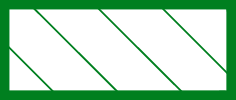History of Giant Mine
Long before the first explorers, fur traders, or prospectors had ventured into the north, the Tetsǫ̀t’ınè people (“metal people”) occupied a vast area around Tinde’e (Great Slave Lake). Their dialect and distinct use of native copper tools set them apart from their Chipewyan cousins. These people are the ancestors of today’s Yellowknives Dene, many of whom also claim Tłı̨cho (Dog Rib) ancestry. The Tetsǫ̀t’ınè are the original keepers of all the lands around Tinde’e. Elders tell of an annual subsistence cycle of spring and summer fishing along the north shore bays of Tinde’e and caribou hunting throughout the forests and tundra to the north. Numerous traditional villages, the largest being T’è ɂehdaà (Dettah), were located along the east shore of Wıı̀lıı̀cheè (Yellowknife Bay), while the west shore, and in particular the valley of Ehnda Deh (Baker Creek), was reserved for moose hunting, berry picking, and medicinal plant harvesting. Elders, who remember a time before Giant Mine, describe the creek as a braided network of ponds flowing through a valley carpeted by blueberries – while women and children picked berries, the men would hunt moose.
Giant Mine Development
Gold was found on the Giant Mine site in 1935 but a commercial ore body was not confirmed until 1944 when a massive gold-bearing shear zone was uncovered beneath the Baker Creek Valley. The Burwash Mine, Con Mine and Negus Mine were all developed in the area before the Giant claims entered into production. Giant Yellowknife Gold Mines Limited poured its first gold brick on June 3, 1948 and the mine remained in operation until 2004 generating over seven million ounces of gold.
During the life of the mine, ownership moved through the hands of a number of companies including Giant Yellowknife Mines, Ltd. (a subsidiary of Falconbridge – 1948-86), Pamour (1986-1990), Royal Oak Mines (1990- 1999) and Miramar Mining Corporation (1999-2004). When Royal Oak went bankrupt in 1999 the Government of Canada became responsible for cleaning up the Giant mine site. It allowed Miramar Mining Corporation to haul ore from the site to its mill at the Con Mine until the Giant Mine was finally closed in 2004.
The Giant Mine site encompasses everything within the boundaries of the lease in place during the operational period of the mine. Two impacted areas, the Giant Mine “town site” and an area of historic tailings deposition along the shore of North Yellowknife Bay, are considered to be part of the site.
Over the lifetime of Giant Mine, 237,000 tonnes of arsenic trioxide dust were collected and stored in fourteen underground chambers at the mine site.
Giant Mine Remediation Project
The Giant Mine Remediation Project is co-managed by the Government of Canada and the Government of the Northwest Territories. They work as the Giant Mine Remediation Project Team to implement the remediation plan.
Learn more about the Project Team.
The intent of the remediation is to clean up the Giant Mine site in order to minimize public health and safety issues and protect the environment.
Learn More About the Project Team Activities.
Regulatory documentation can be viewed on our Documents page or the Public Registry of the Mackenzie Valley Land and Water Board.
The Project Team selected Parsons Inc. to be the Main Construction Manager for the remediation of the Giant Mine site. For more information on employment and contracting opportunities, visit their website.
Parsons Giant Mine Remediation.
Giant Mine Drone Footage 2023
Giant Mine Site Map











